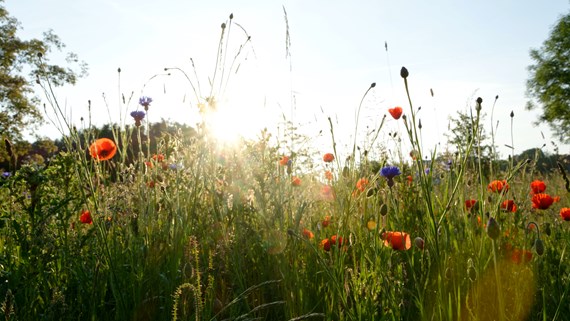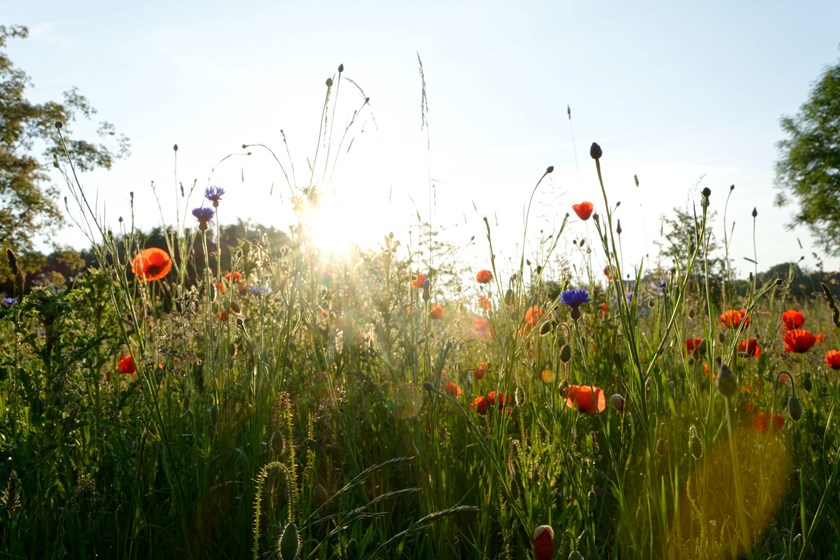BNG requirements are trickling into force, but what’s the best approach?
Insight

The requirement to provide ten percent biodiversity net gain (BNG) became mandatory when Part 6 of the Environment Act 2021 (2021 Act) came into force on 12 February 2024, or 2 April 2024 for small sites – developments with nine houses or fewer on a site of less than one hectare. From this date, all planning permissions issued in England are subject to a deemed condition that the development for which permission is sought must meet the BNG objective.
The Government guidance describes the aim of the BNG objective as, “habitats for wildlife are left in a measurably better state than they were before the development” – which translates into a requirement that the post-development site achieves a net increase in biodiversity of at least ten percent, compared to the biodiversity value of the site pre-development. The associated habitat creation or enhancements must then be maintained for 30 years.
BNG metric
In order to ensure that the biodiversity value of a site is calculated in a standardised way, Natural England have published the statutory biodiversity metric. This is a calculation tool which, with the help of an ecologist, enables developers to calculate the present and projected future biodiversity value of a site, before and after development. It can also predict how much biodiversity value certain habitat creation or enhancement works will create and, as such, is a helpful planning tool.
Examples of BNG delivery are diverse and can include both larger-scale elements – including the creation of dedicated habitat areas, such as wildflower meadows, wetlands, and orchards – and smaller scale elements, such as bird boxes, bee bricks and hedgehog highways. BNG delivery can also be achieved in the construction of the built environment itself, through the inclusion of infrastructure like solar slate, green walls, ground source heat pumps, and rainwater collection.
BNG methods
The required ten percent gain can be achieved in one of three ways, or a combination of them, by:
- carrying out habitat creation or enhancement works on the development site itself – i.e. on-site
- creating or enhancing habitats in off-site locations
- buying statutory credits
Off-site or on-site?
When considering which of the three methods to use, it should be noted that the Government has made it clear that statutory credits are to be used as an option of last resort, and they will be priced deliberately unattractively. The key consideration for many developers will, therefore, be whether to utilise on-site or off-site methods.
The biggest challenge to on-site BNG will, of course, be space and time – the more space that is dedicated to habitat creation or preservation, the less there is for the delivery of built out units. Indeed, dedicating land to be used for BNG will not be a short-term or easily reversed option. This is because what may otherwise have been development land (either as part of the initial development, or as a later “phase”) will be tied up for at least 30 years. Indeed, the Government has expressed hope that “very few biodiversity gain sites are taken out of conservation management entirely at the end of their agreements”. There will also need to be a system of formal monitoring and reporting on the habitat throughout the lifespan of the 30-year agreement to comply with the terms of the legal agreement.
This uncertainty could explain why off-site BNG has generally been regarded by developers as a more realistic option, with developers having the choice of delivering off-site gains either on land they own, entering into arrangements with third party landowners, or buying off site gains from large habitat banks.
That said, the Government’s consultation on the 2021 Act makes clear that the location of BNG efforts will be key – the notion that on-site increases should be “significant” is embedded into the 2021 Act and it is being said that Local Authorities are more likely to review planning applications with significant on-site BNG elements far more favourably than those using off-site BNG.
The consultation also made clear that even off-site gains should be delivered locally wherever possible: the metric rewards gains which are made within strategically important local sites, but marks down those made in neighbouring authorities.
It is hardly surprising that the Government is incentivising on-site BNG, given that on-site measures go hand-in-hand with other Government incentives, such as the Green Infrastructure Network which aims to make green spaces accessible to all and increase the climate resilience of our towns and cities.
The benefits of on-site
Choosing on-site methods will inevitably require the adoption of the key ambitions of great placemaking – quality, longevity and, crucially, sustainability. Each of these is perhaps more traditionally associated with legacy development projects, where a stewardship estate owner collaborates with an aligned developer to create a considered development with a focus on community. Indeed, such legacy developments, like that in Nansledan, Newquay, have shown how these key ambitions can create mixed use developments where people are enthused to live, work, play, and participate in the long term.
Biodiversity outcomes have long since been an essential and evolving element of these placemaking projects, long before the provisions of the 2021 Act were even considered, and they show how on-site BNG can offer opportunities to both communities and stakeholders.
Indeed, it is clear that when landowners have sufficient land to facilitate on-site BNG (or are able to add extra land to planning permission sites), this not only has the “enabling” effect of making the development more attractive for the planning authorities to approve, but legacy developments also show that it can offer multiple ancillary benefits.
Where sites are well-chosen and development layouts are carefully considered, land used for BNG can offer added value for the overall development, having both visual and practical effects. For example, it can enable the screening of parts of the estate from road and traffic noise. The relevant facilities, such as community orchards and allotments, promote public use and multi-generational involvement, and can be used for leisure, health, and educational purposes.
BNG delivery in the built environment which has the effect of reducing domestic energy bills (solar slate, ground source heat pumps etc) is also fast becoming a requirement for those buying new homes. This is not only to help protect against the impact of the increased costs of living, but also to satisfy an ever-increasing discourse making individuals question their own environmental impact.
Further, legacy development projects show how provision can be made for the inclusion of the necessary services and works for the ongoing maintenance of the BNG sites in the overall estate management structure. This allows for the employment of those with appropriate knowledge to foster the sites in the long term, with the recovery of costs from the residential and commercial occupiers as part of their general estate charge.
Taking the above into account, it is surely likely that the prospect of using land for on-site BNG will open up exciting new possibilities, for landowners, developers and the ultimate occupier alike.
The article was first published in ESG Investor on 10 May 2024.
This publication is a general summary of the law. It should not replace legal advice tailored to your specific circumstances.
© Farrer & Co LLP, May 2024





